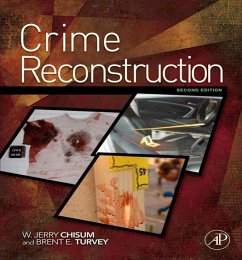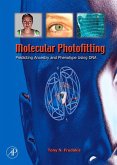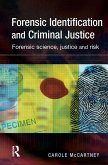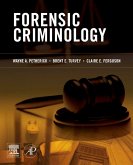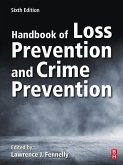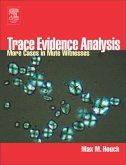Crime Reconstruction, Second Edition is an updated guide to the interpretation of physical evidence, written for the advanced student of forensic science, the practicing forensic generalist and those with multiple forensic specialists. It is designed to assist reconstructionists with understanding their role in the justice system; the development and refinement of case theory' and the limits of physical evidence interpretation. Chisum and Turvey begin with chapters on the history and ethics of crime reconstruction and then shift to the more applied subjects of reconstruction methodology and practice standards. The volume concludes with chapters on courtroom conduct and evidence admissibility to prepare forensic reconstructionists for what awaits them when they take the witness stand.
Crime Reconstruction, Second Edition, remains an unparalleled watershed collaborative effort by internationally known, qualified, and respected forensic science practitioner holding generations of case experience among them. Forensic pioneer such as W. Jerry Chisum, John D. DeHaan, John I. Thorton, and Brent E. Turvey contribute chapters on crime scene investigation, arson reconstruction, trace evidence interpretation, advanced bloodstain interpretation, and ethics. Other chapters cover the subjects of shooting incident reconstruction, interpreting digital evidence, staged crime scenes, and examiner bias. Rarely have so many forensic giants collaborated, and never before have the natural limits of physical evidence been made so clear.
Crime Reconstruction, Second Edition, remains an unparalleled watershed collaborative effort by internationally known, qualified, and respected forensic science practitioner holding generations of case experience among them. Forensic pioneer such as W. Jerry Chisum, John D. DeHaan, John I. Thorton, and Brent E. Turvey contribute chapters on crime scene investigation, arson reconstruction, trace evidence interpretation, advanced bloodstain interpretation, and ethics. Other chapters cover the subjects of shooting incident reconstruction, interpreting digital evidence, staged crime scenes, and examiner bias. Rarely have so many forensic giants collaborated, and never before have the natural limits of physical evidence been made so clear.
- Updates to the majority of chapters, to comply with the NAS Report
- New chapters on forensic science, crime scene investigation, wound pattern analysis, sexual assault reconstruction, and report writing
- Updated with key terms, chapter summaries, discussion questions, and a comprehensive glossary; ideal for those teaching forensic science and crime reconstruction subjects at the college level
- Provides clear practice standards and ethical guidelines for the practicing forensic scientist
Dieser Download kann aus rechtlichen Gründen nur mit Rechnungsadresse in A, B, BG, CY, CZ, D, DK, EW, E, FIN, F, GR, HR, H, IRL, I, LT, L, LR, M, NL, PL, P, R, S, SLO, SK ausgeliefert werden.
"In this update of the 2006 edition, forensic scientists/consultants discuss reconstructionist approaches to crimes and courtroom presentation of, and testimony on, the physical evidence. This text for advanced students includes case examples with photographs, guidelines for evidence identification and wound analysis, experiments (e.g., to assess bloodstain patterns), an evidence dynamics protocol, review questions, a glossary, companion website, and web references to a report on sharp force homicide, a bloodstain pattern case study, and staged crime scene analysis. The authors also consider the impact of future technologies on interpreting forensic evidence, and educational reforms in the field." --SciTech Book News (2011)

